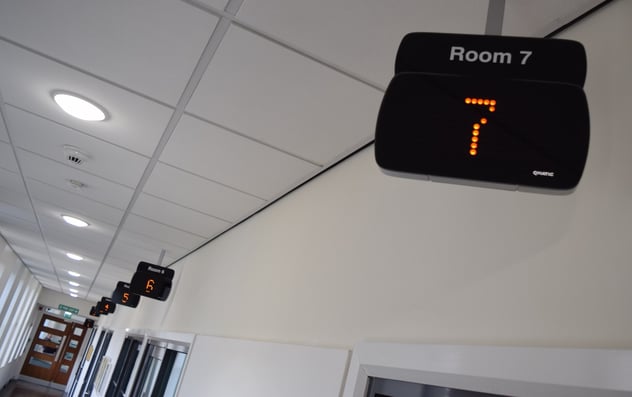Darlington Borough Council is the local authority for the town of Darlington and the surrounding villages in North East England. Darlington Borough has a population of 106,000 residents. It has a busy town hall center serving 350 customers per day for a range of public services supplied by different departments and other public sector organizations. Customers’ needs vary, for example approx. 100-150 customers per day require customer services, just under 100 customers per day require benefits services and customers also require appointments for services such as registrars, children’s financial services and external probation services.

The main challenge for Darlington Borough Council is managing a large range of services and customer needs in one town hall with a complex flexible workforce, including external organizations all using the center for different purposes and at different times. Central management of the customer journeys is required to ensure increased waiting times do not occur that can jeopardize health and safety for both the customers and staff. “Health and safety is paramount in the center. If customers are not informed of their waiting time and their journey is not managed it causes confusion, and dissatisfaction,” said David Alley, Customer Services Manager at Darlington Borough Council. “We need to be able to manage many different services in the one center with staff on the move constantly. We also need to ensure staff are trained in health and safety practices and are able to use the center.”

With Qmatic, the center’s busy moving needs are managed with ease. Front of house staff can now concierge customers with a smile, notifying them of other ways to
receive service such as online or via the call center. But if a physical appointment is required they can communicate the expected waiting time on entry setting expectations and reducing friction. Customers can also self-serve by taking tickets from the kiosk. Digital signage throughout the center makes it easy to communicate which ticket is ready to be served and where the customer needs to be. The web based interface makes it easy to roll out the solution to staff, only giving them what they need. The center is now controlled with all customers in flow from the moment they enter. Waiting areas are rarely full and the expectations of both customers and staff are clear. “We aim for an average waiting time of 10 minutes and in reality, it’s now much quicker,” David concludes.









